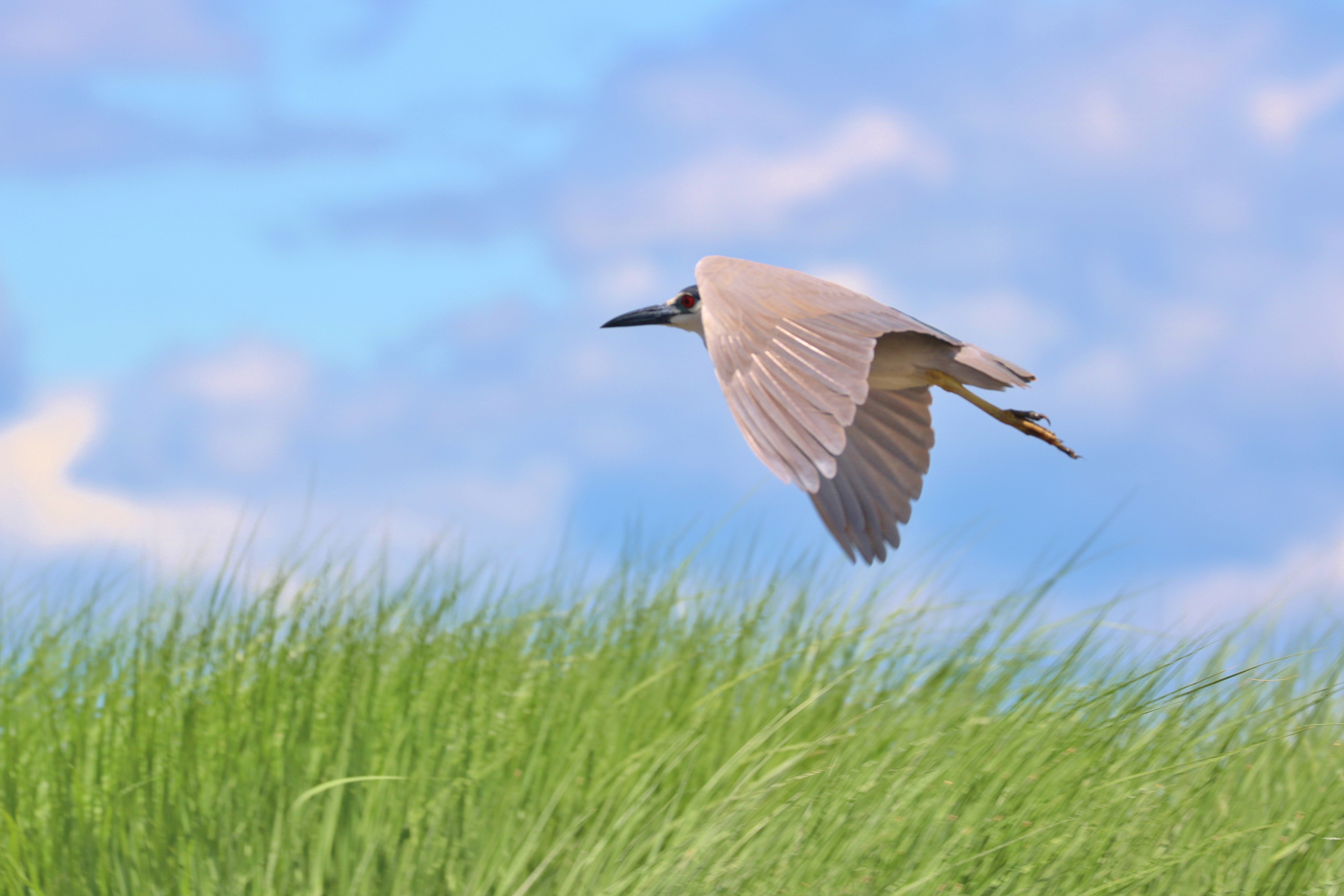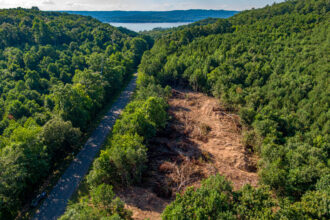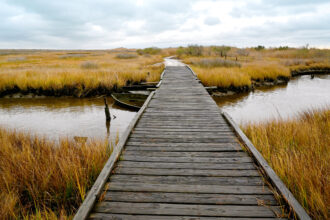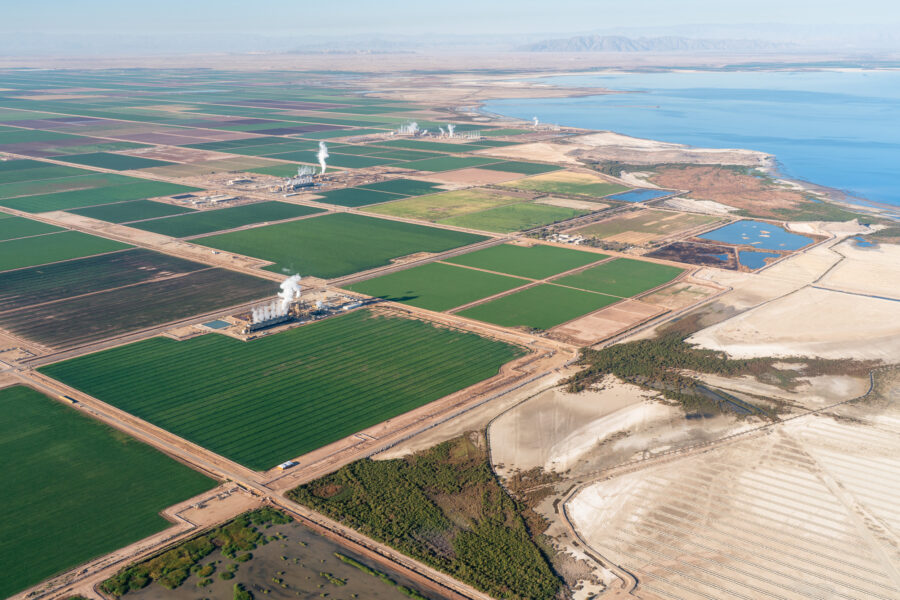For bird enthusiasts and average residents alike, the sight of wild, colorful migratory birds like the great egret or the black-crowned night heron, in a dense and loud city like New York is something to behold.
Every spring, these wading birds migrate to the unoccupied islands along the city’s coast, as well as to certain areas on the city’s mainland, to reproduce and forage for food. For the past four years, Shannon Curley, a postdoctoral fellow at Cornell, has traveled out to these islands to coordinate the New York City Bird Alliance’s annual nesting harbor herons survey.
“When you’re standing on some of these islands,” said Curley, “you have to the right, just hundreds of nesting birds, and then to the left you have the New York City skyline. It’s a very unworldly experience.”
Since 1985, the bird alliance has continuously monitored the nesting habits of 10 species of wading birds that appear every spring, and worked to conserve their habitats in the long term. In May 2022, they even observed the more reclusive great blue heron nesting on an island in the East River called Mill Rock–the first confirmed nest in New York County.
“Every time we go out there and we see them,” said Dustin Partridge, director of conservation and science at the New York City Bird Alliance, “I’m still struck that they’re literally dinosaurs. There are dinosaurs living in New York Harbor.”
The long-standing nature of the survey has not dulled the excitement of those who conduct it.
Though their nesting habits likely predate the city of New York in its modern form, these wading birds consistently face habitat loss due to coastal developments, human disturbance, predation and sea level rise. Their health and behavior can also be impacted by pollutants or contaminants in local waterways.
Currently, these wading birds nest on six of the many small, unoccupied islands along the city’s coastline. Though they are able to acclimate to a small level of human presence, humans entering their area can cause entire colonies of wading birds to abandon an island, or not to return to it the next year.
“Keeping off of islands where there’s signage for nesting birds is important,” said Curley. “We don’t want to lose the colony because one person decided they wanted to go have a bonfire on an island.”
Humans can also have indirect impacts on these bird populations. According to the bird alliance, when local residents release predators such as raccoons into green spaces along the coast, this also has unintended consequences. Raccoons have been known to swim to the islands within reach, preying on the smaller wading birds and their chicks. Birds like snowy egrets and ibises often nest in shrubs closer to the ground, making them more vulnerable to these kinds of predators.
Two years ago, herons abandoned Subway Island in Jamaica Bay, largely due to the presence of raccoons.
“It was once the most abundant and diverse island in Jamaica Bay,” said Partridge. “In 2022, we arrived, and it was silent—there were no birds there. All that was left behind were a lot of raccoon tracks and scat and a few eaten carcasses.”

Human disturbances and the increase in predators can cause habitat loss for these bird species which have already been extremely impacted by the development of urban coasts for industrial and residential uses. When birds consistently lose safe nesting areas, it can impact their population numbers.
“If they are unsuccessful, year after year, in their reproduction efforts, you may actually be losing birds,” said Joanna Burger, a behavioral ecologist at Rutgers-New Brunswick. “An egret raises one chick instead of three for a number of years, and that overall decreases the population—even though the colony may still be there—because there are fewer and fewer young birds to enter the breeding population.”
These wading birds also face potential contamination of their food supply. They’re top predators—they’ll eat anything from fish, to crustaceans, to amphibians, to rodents. This also means they operate as important indicators of the health of the harbor.
“In 70 years, we have changed the environment along the Jersey Shore and along the Long Island shore,” said Burger. “That’s not a lot of time to have changed the environment for nesting birds that have lived along the coast for thousands of years.”
Herons only returned to the New York harbor islands after the passage of the 1977 Clean Water Act. Heavy metals can accumulate in the herons’ blood, eggs and feathers, adversely impacting their behavior, and alerting the ecologists who study them, like Burger, to the levels of contaminants in local waterways.
Today, metal contaminants are less of a concern as the levels of lead and cadmium found in these birds has steadily decreased over the last half-century, said Burger, largely due to new regulations placed on the use of these metals in paint and batteries.
Since the turn of the century, levels of mercury in birds have not markedly decreased in the same way, due to emissions from coal-burning power plants across the world. Mercury is a “global pollutant,” which means it can travel many miles through the atmosphere before being deposited on earth, often through rainfall.
In April, the Biden administration issued final revisions to the Mercury and Air Toxics Standards (MATS), which could lower the amount of mercury emitted from power plants located in the United States.
“People might say that the effect from contaminants is small compared to the effect of [habitat] fragmentation or habitat loss,” said Burger. “And while that is true, it’s still important to reduce every adverse effect we can, because some of them we can’t.”
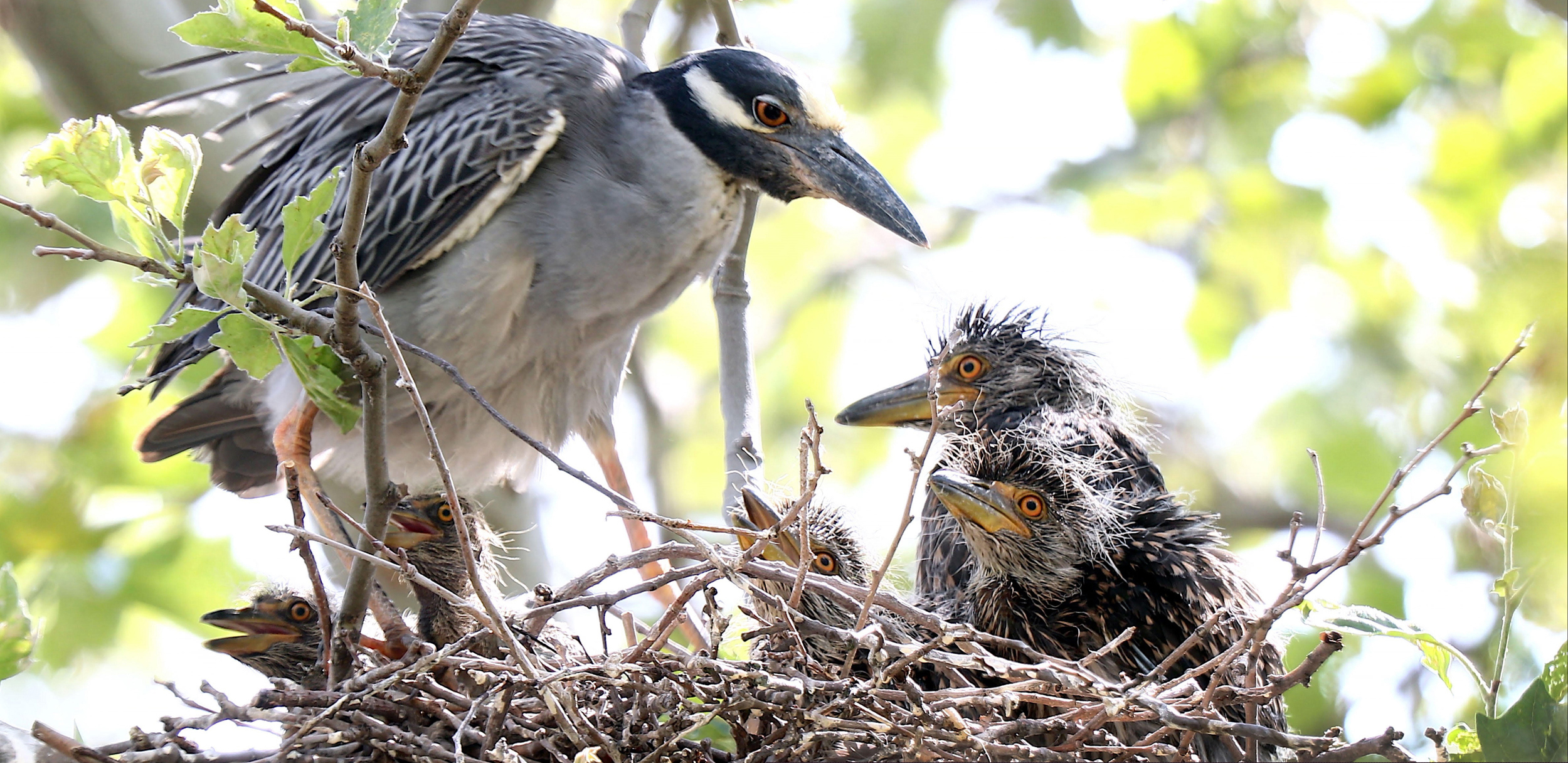
According to the bird alliance, these birds have been observed foraging as far north as Yonkers, 14 miles north of midtown Manhattan, to feed themselves and their chicks. When beaches, marshes and wetlands are developed for other uses, or lost to erosion, wading birds lose access to food.
In recent years, the New York City Parks Department, in partnership with the Natural Areas Conservancy, has spearheaded projects to restore marshes and wetlands along the city’s coastline, providing important foraging opportunities for wading birds, and nesting areas for migratory shorebirds.
Another urban coast, the New Jersey Meadowlands, the system of wetlands and marshes that border the Hackensack River, is located a couple miles west of New York City. Here, the black-crowned night heron, as well as the yellow-crowned night heron, have been observed since ecological restoration and conservation work began. In New Jersey, these bird species are classified as threatened, though not in New York, which Partridge laments.
According to Teresa Doss, the co-director and chief restoration scientist at the Meadowlands Research and Restoration Institute, three quarters of the Meadowlands’ 20,000 acres has been lost to development, much of which can be attributed to industrial and residential use and landfills.
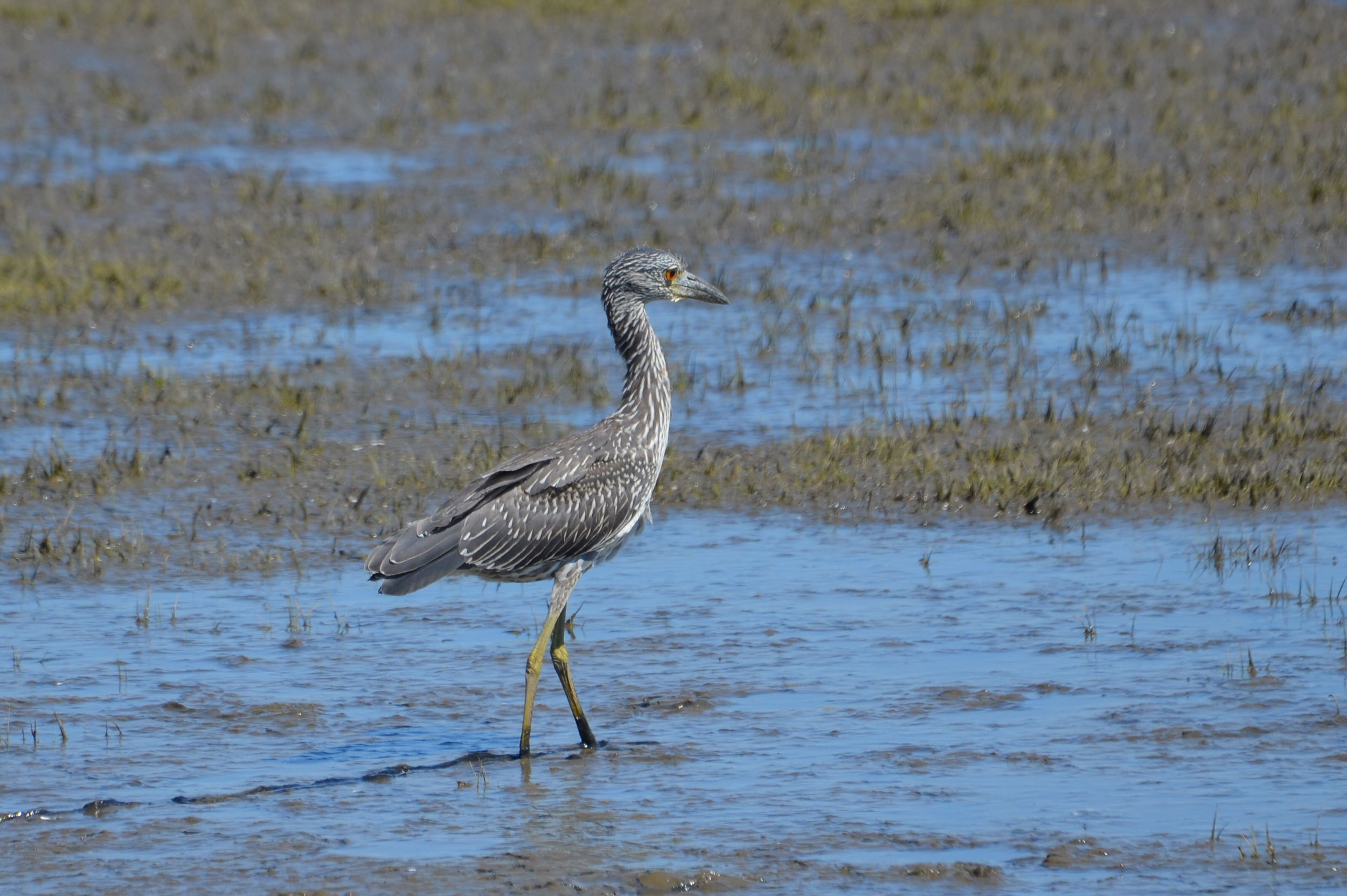
“We have all these areas that are filled in marshes, but they’re open spaces,” said Doss. “What we’re seeing is, when they’re just left alone, nature automatically just comes roaring back in. We’re looking to see how we can help assist with the recovery of these landfills and create habitat systems that can support a lot of migratory bird species.”
The Meadowlands Institute is looking at bringing in reef balls, artificial coral reefs, to support marine life while also limiting marsh erosion along the coast. Restoring and strengthening wetlands and marshes along the urban coast is not only of paramount importance for supporting nesting herons, which need elevation to survive storm surges, but also for the continuing human presence. Wetlands offer important flood protection for coastal communities, particularly as sea levels rise and rainfall increases due to climate change.
“When you think about the natural infrastructure that’s here, you think about the wetlands that filter the water, that attenuate flood flows,” said Doss. “You think of the forest and the grasslands, which can sequester carbon and help purify water and rain.”
This story is funded by readers like you.
Our nonprofit newsroom provides award-winning climate coverage free of charge and advertising. We rely on donations from readers like you to keep going. Please donate now to support our work.
Donate NowThe restoration of wading birds’ habitats also means further protection from flooding for coastal communities.
Urban coasts, even those with an extensive history of environmental degradation and commercial and industrial development, can still host an incredibly diverse array of migratory bird species. Though coastal communities are unlikely to relinquish their real estate to the birds that once nested and foraged freely along the Hudson estuaries, coexistence seems possible.
With expansive ecological restoration of the remaining available green spaces along the coast and in the bay, as well as by limiting human interference in wading birds’ nesting areas, these wild wading birds can continue their yearly pilgrimage to the city’s shores.
“If you picture the wild coasts of Maine, or the beaches of Cape Cod, or any of these wild areas in the northeast,” said Partridge. “To think that New York City has this wading bird population that they don’t have—this area where these high densities of wading birds are out there—to me, that’s kind of magical.”
About This Story
Perhaps you noticed: This story, like all the news we publish, is free to read. That’s because Inside Climate News is a 501c3 nonprofit organization. We do not charge a subscription fee, lock our news behind a paywall, or clutter our website with ads. We make our news on climate and the environment freely available to you and anyone who wants it.
That’s not all. We also share our news for free with scores of other media organizations around the country. Many of them can’t afford to do environmental journalism of their own. We’ve built bureaus from coast to coast to report local stories, collaborate with local newsrooms and co-publish articles so that this vital work is shared as widely as possible.
Two of us launched ICN in 2007. Six years later we earned a Pulitzer Prize for National Reporting, and now we run the oldest and largest dedicated climate newsroom in the nation. We tell the story in all its complexity. We hold polluters accountable. We expose environmental injustice. We debunk misinformation. We scrutinize solutions and inspire action.
Donations from readers like you fund every aspect of what we do. If you don’t already, will you support our ongoing work, our reporting on the biggest crisis facing our planet, and help us reach even more readers in more places?
Please take a moment to make a tax-deductible donation. Every one of them makes a difference.
Thank you,

